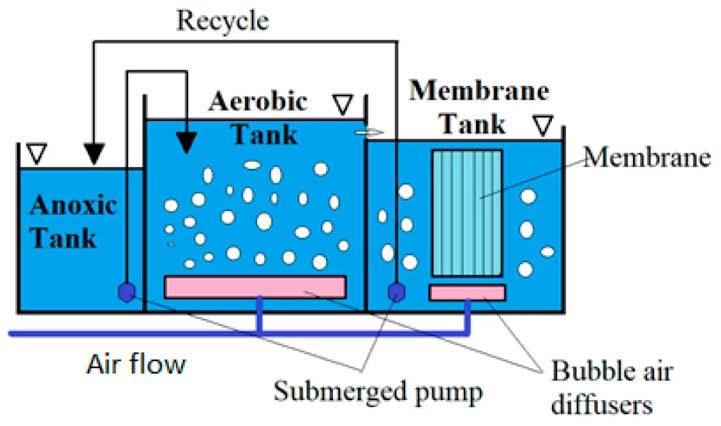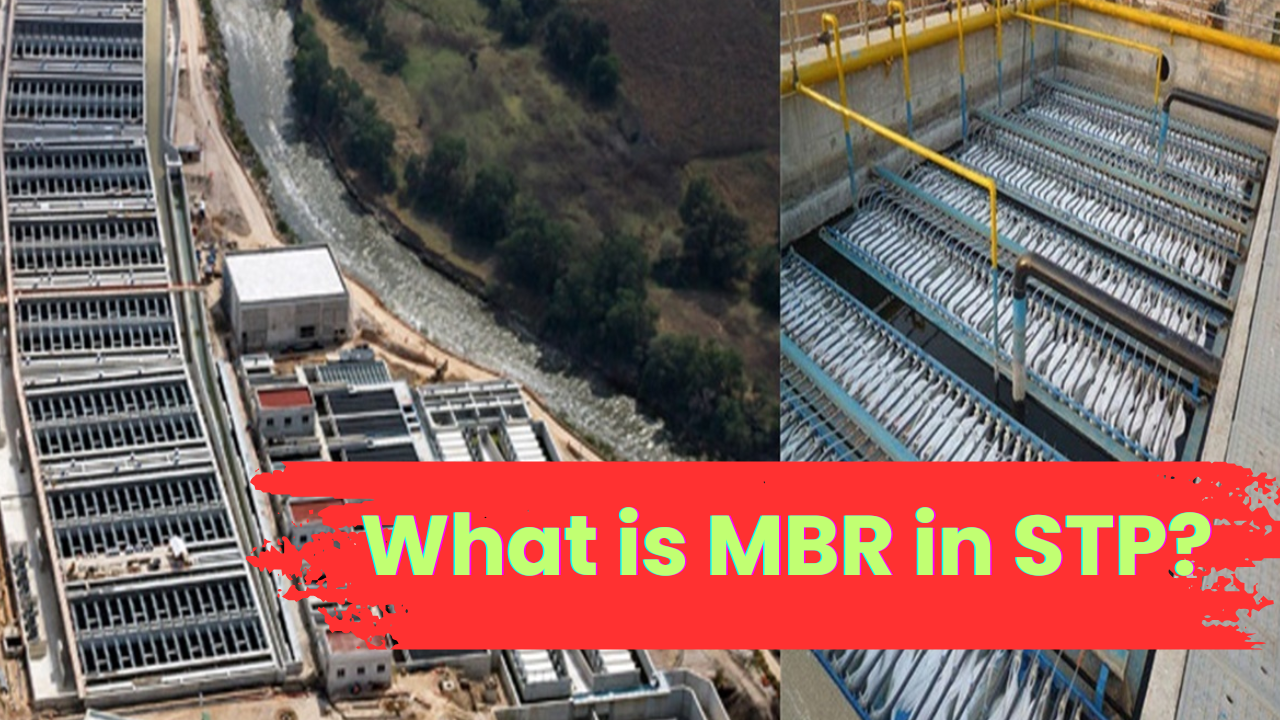Membrane Bioreactor (MBR) technology is revolutionizing the way Sewage Treatment Plants (STPs) treat wastewater. Combining traditional biological treatment processes with advanced membrane filtration, MBR technology provides a highly efficient and space-saving method for producing cleaner water. This article delves into the functionality, advantages, components, process flow, and benefits of integrating MBR technology into STPs, helping engineers, plant operators, and decision-makers understand why MBR is becoming an essential part of wastewater treatment.
Introduction to MBR Technology
MBR technology is an innovative approach to wastewater treatment, successfully meeting the growing demands for better water quality standards. It integrates biological treatment processes with membrane filtration to produce cleaner effluent with fewer contaminants than traditional sewage treatment methods. While conventional treatment systems use sedimentation tanks to separate solids from the water, MBR systems use semi-permeable membranes that provide a more efficient separation of contaminants. These systems are more compact, produce higher-quality effluent, and have a higher capacity for treating wastewater compared to conventional treatment plants.
Why MBR in Sewage Treatment Plants?
Traditional sewage treatment methods, such as activated sludge processes, often struggle to meet stringent water quality standards. As environmental regulations become stricter and the demand for water reuse grows, conventional methods are being pushed to their limits. MBR technology addresses these challenges by providing:
- Superior Filtration: The membrane filtration process removes smaller contaminants, including bacteria and suspended solids, resulting in higher water quality.
- Compact Design: MBR systems require less space than traditional treatment methods, which is ideal for urban areas or facilities with limited space.
- Efficiency: With higher biological treatment efficiency, MBR technology reduces the need for large settling tanks, allowing for more efficient space and energy use.
- Compliance: MBR systems are capable of producing treated water that meets or exceeds regulatory discharge standards, making them ideal for regions with strict regulations.
As a result, MBR technology is increasingly being used worldwide for both municipal and industrial wastewater treatment. It not only helps meet environmental standards but also supports sustainability by allowing for water reuse.
Core Components of MBR Systems
MBR systems consist of several critical components that work together to treat wastewater. Each element plays a vital role in ensuring the efficiency and effectiveness of the treatment process. Let’s examine the key components:
1. Biological Treatment Tank
The biological treatment tank is the first step in the MBR system. This tank is where microorganisms break down organic matter present in the wastewater. The tank provides the right environment for bacteria to thrive, digesting the organic pollutants in the water. The effectiveness of this biological process depends on factors like oxygen supply, temperature, and pH levels. The biological tank plays a crucial role in reducing the pollution load before the water moves to the filtration stage.
2. Membrane Modules
Membrane modules are at the heart of the MBR system. These modules contain membranes with extremely fine pores (typically ranging from 0.1 to 0.4 microns). The membranes filter out suspended solids, bacteria, and other contaminants from the treated water. The clean water that passes through the membrane is referred to as permeate, while the concentrated waste remains behind in the system, ready for disposal. The efficiency of the membrane directly impacts the overall water quality, making it one of the most critical components of the MBR process.
3. Aeration System
The aeration system serves a dual purpose in the MBR process. First, it provides oxygen to the microorganisms in the biological tank, which is essential for their metabolic processes. Second, the aeration helps prevent fouling of the membranes. Membrane fouling occurs when particles accumulate on the membrane surface, which can reduce its filtration efficiency. By supplying continuous airflow, the aeration system helps keep the membrane surfaces clean and functional, extending their lifespan and ensuring the system operates at peak efficiency.
How Does MBR Work? The Process Flow

The MBR process follows a multi-stage sequence to treat wastewater effectively. Let’s take a look at the primary steps involved:
1. Initial Screening
The wastewater first enters a screening chamber where large objects like plastics, metals, and debris are removed. This screening process protects the rest of the system from damage and ensures that only smaller particles proceed through the treatment stages.
2. Biological Treatment
After screening, the water moves to the biological treatment tank. Here, active microorganisms consume organic materials like fats, proteins, and carbohydrates. The bacteria break down the organic matter, converting it into simpler compounds, reducing the overall pollution load in the water.
3. Membrane Filtration
The partially treated water then flows through the membrane modules. The fine pores in the membrane filter out any remaining contaminants, including bacteria, viruses, and suspended solids. The clean water passes through the membrane, ready for discharge or further treatment if necessary.
4. Sludge Management
After the biological and membrane treatment processes, the system produces concentrated sludge, which contains the residual contaminants. This sludge is typically sent for further processing, such as dewatering or composting, depending on the specific requirements of the treatment plant.
Benefits of MBR Technology
The integration of MBR technology into Sewage Treatment Plants brings several significant benefits that make it a preferred choice for wastewater treatment worldwide. These advantages include:
1. High-Quality Effluent
MBR systems are capable of producing high-quality effluent that meets or exceeds the required discharge standards. The membrane filtration process removes even fine contaminants, resulting in water that is suitable for reuse in various applications, such as irrigation, industrial processes, or even potable water supply (after further treatment).
2. Compact Footprint
Traditional sewage treatment systems require large tanks for settling and filtration. MBR systems, on the other hand, are more compact due to the integration of membrane filtration, reducing the space required for treatment. This space-saving design is particularly beneficial for urban areas or facilities with limited land available for expansion.
3. Operational Efficiency
MBR systems are more energy-efficient and require fewer chemicals compared to conventional treatment methods. The biological treatment process is more controlled and efficient, which reduces the overall energy consumption of the system. Moreover, the reduced need for large tanks and secondary clarifiers contributes to energy savings.
4. Flexibility in Design
MBR systems are flexible and can be designed to meet the specific needs of different treatment plants. Whether treating municipal wastewater, industrial effluent, or even stormwater, MBR systems can be customized to optimize performance based on the unique requirements of the facility.
5. Sustainability and Water Reuse
Given the increasing pressure to conserve water and the growing demand for recycling and reuse, MBR technology plays a crucial role in promoting sustainability. The high-quality effluent produced by MBR systems is ideal for water reuse, helping reduce the reliance on freshwater sources and minimize environmental impact.
Implementation Considerations and Challenges
While MBR systems offer many benefits, they also come with specific challenges and considerations that need to be addressed during implementation. These factors include:
1. Higher Initial Investment
One of the primary challenges of implementing MBR technology is the initial capital cost. MBR systems require a higher upfront investment due to the need for specialized membrane modules and aeration systems. However, the long-term operational savings and benefits often outweigh the initial costs.
2. Maintenance and Operation
MBR systems require skilled operators to manage and maintain the system effectively. Regular monitoring of membrane fouling, biological tank performance, and aeration systems is essential to ensure optimal operation. The membranes themselves also need periodic cleaning or replacement, which adds to the operational costs.
3. Energy Consumption
Although MBR systems are more energy-efficient than conventional systems, they still require significant energy input, particularly for aeration and pumping. Energy consumption can vary depending on the size and design of the system. Optimizing energy use through automation and control systems can help minimize these costs.
Conclusion
The integration of Membrane Bioreactor (MBR) technology into Sewage Treatment Plants (STPs) represents a major advancement in wastewater treatment. MBR systems offer a highly efficient, compact, and reliable solution for producing high-quality effluent that meets or exceeds regulatory standards. With benefits such as water reuse capabilities, space efficiency, and operational savings, MBR technology is becoming the go-to choice for modern wastewater treatment worldwide.
By understanding how MBR technology works and the key components involved, facility managers and decision-makers can make informed choices about integrating these systems into their plants. As environmental regulations become more stringent and the need for water reuse continues to grow, MBR systems will play an increasingly important role in ensuring sustainable and effective wastewater treatment.
If you are considering implementing MBR technology in your Sewage Treatment Plant, our team of experts at 3D Aqua is ready to help. Contact us today to learn more about the benefits of MBR and how we can assist you in upgrading your wastewater treatment process.
Contact 3D Aqua:
- Phone: +91-89630-89630
- Email: info@3daqua.in

